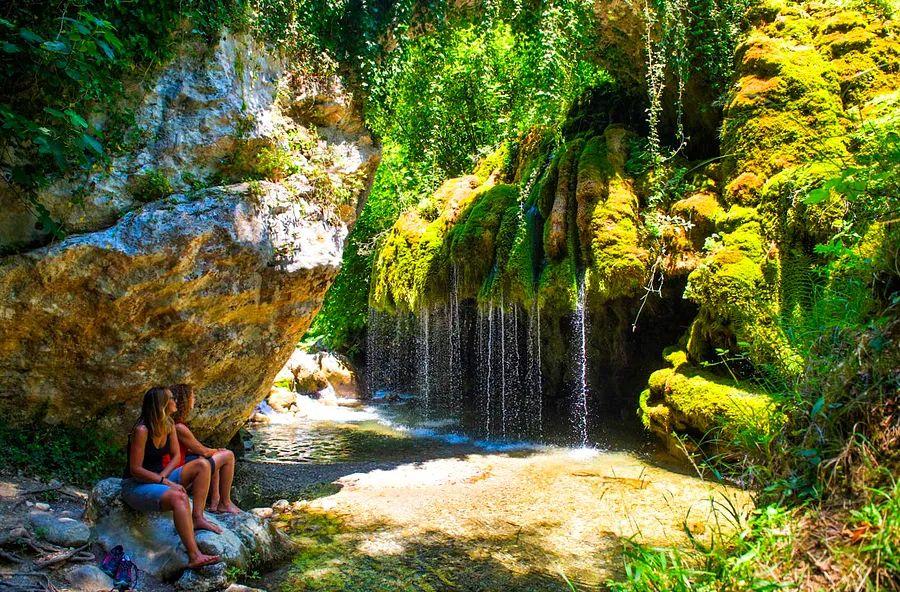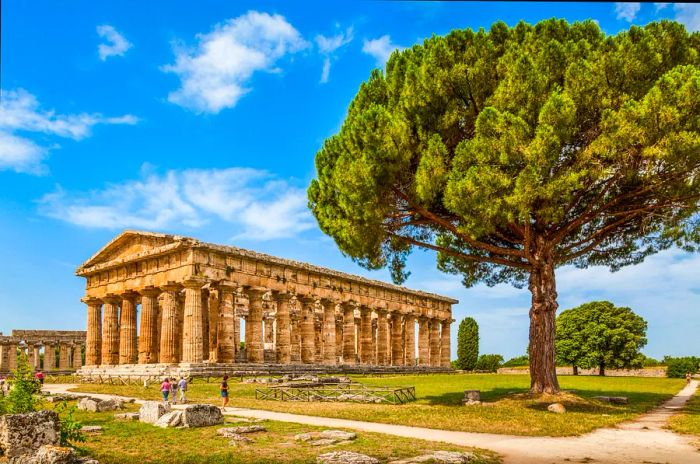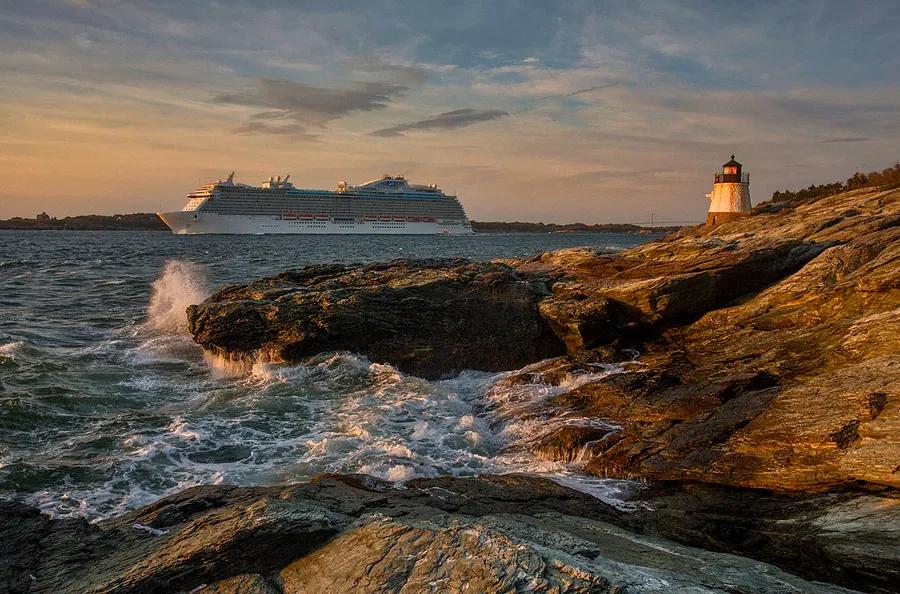You might not have ventured to Cilento yet. Here’s why it deserves your attention

A UNESCO World Heritage site, Cilento is a diverse and expansive region located in the southern tip of Campania, Italy. Often eclipsed by its flashier neighbors, Naples and the Amalfi Coast, the underrated Cilento offers a more laid-back atmosphere.
In addition to its main highlight, the Ancient Greek city of Paestum, Cilento is rich with natural beauty and historical treasures. If this region is unfamiliar to you, you’re missing out on its 80 charming towns, a national park, archaeological sites, majestic mountains, rolling hills, and extensive beaches. Plus, the local cuisine and lifestyle contribute to the remarkable longevity of its residents—here, 0.3 out of every 10 people lives to be over 100 years old.
Cilento is renowned for its celebrated Mediterranean Diet, which promotes health and wellness without sacrificing the joy of delectable meals. The notion of cutting back on carbs is nonexistent here; bread and pasta are essentials, alongside legumes, and fresh fruits and vegetables from sun-kissed gardens. Life in these tranquil villages is relaxed—part of Cilento's allure lies in its absence of mass tourism, so it’s important to honor this more serene way of living.
You could easily spend a month exploring each town, hiking every trail, and lounging on every beach. However, if your vacation time is limited, here’s our recommendation on what to prioritize during your first (but definitely not your last) visit to Cilento.
 Travel back to ancient Greece in southern Italy © canadastock / Shutterstock
Travel back to ancient Greece in southern Italy © canadastock / ShutterstockExplore the best-preserved Greek temples in Paestum
Nearly 3000 years ago, Ancient Greeks set foot on these shores, infusing the area with their culture and traditions, and leaving a lasting mark on the landscape. The Greek colony of Poseidonia, which evolved into Paestum, stands as the only remaining example of a Magna-Grecian town, featuring three stunning Greek temples that rank among the best preserved globally.
The main attractions are two temples dedicated to Hera and a smaller one devoted to Athena, all built in the Doric style during the fifth century BCE. You can also wander through the remnants of a Roman amphitheater, thermal baths, and various shops and residences. Download the Paestum phone app to enjoy a self-guided tour at your own pace.
The expansive open-air archaeological park of Paestum feels both vast and personal: although it’s thoughtfully curated, it retains a wild and uncharted appearance, allowing you to roam freely among the ruins. In contrast to the bustling Pompeii, this site feels secluded and set within a picturesque landscape—during peak season, you might not encounter another visitor during your exploration.
In the summer months, it's best to explore the park early in the morning, then take refuge in the covered museum to escape the scorching sun. There, you can admire renowned artifacts like the Tomb of the Diver, along with various relics from Ancient Greek and Roman eras.
For lunch, skip the cafes near the site and drive 30 minutes north to Battipaglia. Choose a caseificio (cheese-making factory) and indulge in their mozzarella di bufala DOP along with a selection of other local dairy delights.
Explore Europe’s largest charterhouse in Padula
Make your way to the inland town of Padula, situated in the heart of Vallo di Diano. Here, you can visit the grand Certosa di San Lorenzo, the largest charterhouse monastery in Europe, originally constructed in 1306.
Don’t let the simple exterior deceive you – within the Certosa lies a blend of architectural styles, showcasing a Baroque grandeur set against the starkness of monastic life. The layout follows the traditional monastery model as a self-sustaining community, yet the Certosa has been lavishly adorned over the centuries. The church, chapels, treasury, and dining halls reflect the former glory of the Certosa, standing in sharp contrast to the small, bare cells where the Carthusian monks once slept.
While you won’t encounter any monks today, as the Certosa di Padula now functions as a museum, you can still trace the paths they walked during their daily routines. Take a moment in the Chiostro Grande, the expansive cloister (104 x 149 meters) that took nearly two centuries to finish. The view is particularly striking, as the hilltop town of Padula looms over the Certosa.
The monastery is also home to the Museo Archeologico Provinciale della Lucania Occidentale. This collection features tombs, vases, funerary artifacts, columns, and other archaeological treasures from across Vallo di Diano, spanning from the tenth century BCE to the sixth century CE.
 Cilento's culinary offerings strike the perfect balance between health and flavor © alvarez / Getty Images
Cilento's culinary offerings strike the perfect balance between health and flavor © alvarez / Getty ImagesSavor local produce and immerse yourself in the Mediterranean Diet
The crops cultivated in Cilento are unique and could very well be your best shot at discovering the secret to longevity. American physiologist Ancel Keys, known for creating the K-ration during WWII, dedicated much of his life to studying the Cilentani and formalized the Mediterranean Diet right here in Cilento.
This 'diet' isn’t about cutting out foods but choosing the best available options. When in Cilento, embrace the local way of eating and relish their fresh produce.
Indulge in Cilento’s signature pasta, the meticulously crafted fusilli cilentani (a type of elongated fusilli). This dish can be served with a hearty meat sauce or paired with fresh local vegetables like tomatoes, zucchini, or eggplant. Don't miss tasting the white artichokes of Pertosa, whether as a side, in a salad, or as a spread.
A visit isn’t complete without sampling local charcuterie, including their seasoned dried sausage and the soppressata di Gioi. Enjoy the renowned dairy products such as mozzarella and ricotta di bufala, along with a range of caciocavallo cheeses. Complement these with homemade jams and marmalades crafted from local ingredients, especially Cilento’s DOP white fig, noted as the sweetest in Italy. Don’t hold back on the Cilento extra virgin olive oil, and always season your dishes with spices and herbs. Ask for polvere di peperone crusco, a maroon powder from ground local peppers, commonly sprinkled on vegetable dishes for a sweet or spicy kick. And remember to sprinkle rosemary on your meats and potatoes; it’s said to be vital for longevity.
The Mediterranean Diet transcends mere food; it embodies the lifestyle of Cilento as a whole. This way of living emphasizes the ethical and sustainable cultivation and consumption of food as it has been for generations. In 2010, UNESCO recognized the Mediterranean Diet as Intangible Cultural Heritage, making Cilento an ideal location to understand its significance.
Discover the Pertosa caves
The Grotte (caves) of Pertosa-Auletta are unique in Italy, offering the chance to navigate an underground river. Shrouded in darkness, the Pertosa grotte resemble settings from a horror film, brightened only by colorful artificial lights. The temperature drops significantly below ground, so be sure to dress warmly and watch your step on the slippery stone floors.
Join a guided tour that will take you on a boat ride along the underground river, followed by a walk among thousands of fascinating stalactites and stalagmites. You'll uncover remnants of civilizations that date back four thousand years.
Cilento has been inhabited for half a million years, and the Grotte di Pertosa show signs of occupation since the mid-Bronze Age. These caves hold artifacts from prehistoric communities and even evidence of what was once mistakenly thought to be a distinct Paleolithic hominid species, Homo Camaerotensis, which was considered a potential missing link in human evolution.
 The beaches lining the Gulf of Policastro are breathtaking and ideal for family getaways © Getty Images / iStockphoto
The beaches lining the Gulf of Policastro are breathtaking and ideal for family getaways © Getty Images / iStockphotoSavor the sandy beaches of Cilento
Cilento boasts a stunning coastal stretch of over 100 kilometers, showcasing emerald waters between the Gulf of Salerno and the Gulf of Policastro. This area features 16 towns and countless charming hamlets where you can relish the seaside without the worry of overcrowded cafes and restaurants.
If sandy beaches and family-friendly spots are what you seek, consider visiting Agropoli and Marina di Ascea for their golden sands and plenty of space for kids to frolic. Further south, the scenic Punta Licosa greets you with crystal-clear waters, white sands, and wild Mediterranean vegetation, an area once thought to be home to sirens. Continue south to Acciaroli, the enchanting village that inspired Ernest Hemingway's The Old Man and the Sea.
Visit the archaeological site of Velia for a fascinating history lesson or an engaging theater performance, and explore the remnants of the ancient city of Elea, the birthplace of the Greek philosopher Parmenides and his influential school of thought. If you plan to visit Paestum as well, one ticket grants access to both locations.
Be sure to experience the natural beauty of the protected beaches at Santa Maria di Castellabate and Costa degli Infreschi e della Masseta, along with the stunning marine grottoes found on the coast of Palinuro and Marina di Camerota.
Getting to Cilento and accommodation options
The best way to explore Cilento is by car, as public transportation options inland are limited. While a few train stations exist in Vallo di Diano, many have been closed for years; the nearest is in Battipaglia. From there, the national railway offers a few substitute buses daily to and from Napoli, and the public bus service SITA Sud connects Salerno and Pertosa.
Even with these options, bus services can be unreliable. Traveling independently by car is much more convenient and offers greater flexibility. Public transport is more abundant along the coast, with regional trains (Trenitalia), high-speed trains (Italo), and public buses connecting most towns with multiple daily runs.
The nearest airport is Naples Airport in Capodichino, which is a couple of hours' drive from various parts of Cilento, depending on your destination. Alternatively, the new Salerno-Costa d’Amalfi airport, located just outside Salerno, will be slightly closer to Cilento and is expected to open for commercial flights in 2024.
For an authentic local experience in Padula, consider staying at Fattoria Alvaneta, a charming family-run B&B situated on a hilltop. While it may be a bit challenging to reach by car, the journey is well worth it. Their dinner offerings feature local produce—genuine, hearty, and utterly delicious.
If you're looking for a vibrant holiday, choose accommodation in the coastal towns of Ascea, Palinuro, or Marina di Camerota. You'll be close to the beach and have numerous options for activities both on land and in the water. From these towns, it's easy to travel up and down the coast by car or train.

1

2

3

4

5
Evaluation :
5/5